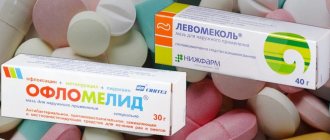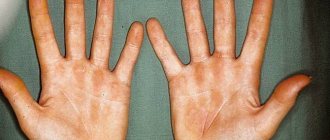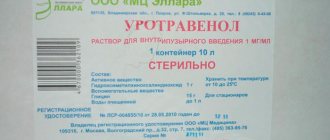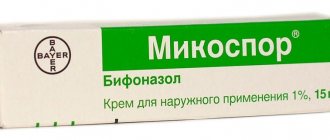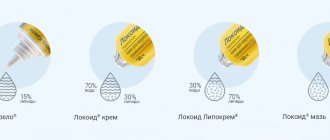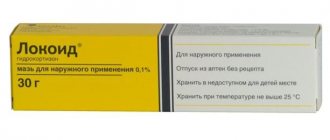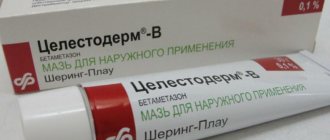What is Solcoseryl ointment used for?
The drug is based on deproteinized dialysate obtained through special processing from the blood of calves. This substance is often used in medicine in countries such as China, Korea, and the entire CIS. It has proven itself to be an effective remedy that can:
- enrich tissue cells damaged due to hypoxia with oxygen and glucose;
- start tissue repair processes;
- activate healthy cell division processes;
- increases the level of energy produced by cells;
- protects the skin from external damage by forming a film on its surface;
- triggers the production of collagen by tissues.
Based on the activity of the drug, the drug can be used for:
- frostbite;
- psoriasis;
- anal ring cracks;
- cuts;
- abrasions;
- scratches;
- bedsores;
- acne marks;
- dermatitis;
First of all, to achieve the best effect, it is necessary to start therapy in the early stages of the problem.
Deproteinized dialysate from calf blood - indications for use
The following list of indications for use is determined by the presence in the drug of deproteinized dialysate obtained from the blood of dairy calves. The dialysate contains a large number of active substances and growth factors that accelerate regeneration processes in the skin and mucous membrane. Indications for use of Solcoseryl gel –
- wet wounds on the skin and red border of the lips,
- trophic ulcers on the skin,
- erosions and ulcers of the oral mucosa,
- bedsores under removable dentures,
- injuries to the mucous membrane from removable and fixed dentures, sharp edges of fillings.
Once again, we draw your attention to the fact that when using the drug on the skin and red border of the lips, the indication for use is only wet wounds. Those. wounds must not be covered with crusts and have a moist discharge. If the wound is covered with dry crusts and there is no wet discharge, then according to the instructions for use, it is necessary to use not a gel, but Solcoseryl in the form of an ointment.
If you plan to treat the oral mucosa, then keep in mind that the gel form is optimal for superficial lesions of the mucous membrane - shallow ulcers, burns, bedsores under dentures. But if the ulcer is deep enough, or you need to cure alveolitis in the hole of an extracted tooth, then in this case it is better to use another form of this drug - Solcoseryl dental paste.
Solcoseryl ointment as a face mask
Cosmetologists claim that the use of Solcoseryl in the early stages of age-related changes allows you to maintain youthful skin. Timely start of use can replace expensive laser rejuvenation in the salon. First of all, Solcoseryl allows you to get rid of wrinkles and prevent their earlier appearance. The ointment is capable of:
- provide adequate nutrition to the facial skin;
- get rid of acne;
- relieve inflammation;
- improve complexion;
- tighten the oval;
- get rid of wrinkles.
The expected effects are possible due to the fact that using a mask allows you to saturate tissues and cells with oxygen and accelerate regeneration. Thanks to the application of the cream, collagen, which is responsible for skin elasticity, begins to be actively produced. The more collagen produced, the fewer wrinkles your skin will have. It is like a support for a heavy skin sheet, preventing its individual areas from falling through, preventing the formation of wrinkles.
Instructions for use
An adult needs to take tablets three times a day. The dosage per application is 100 mg, which is equivalent to one tablet with a concentration of the active ingredient of 0.1 g. Take before meals, wash down the medicine with a sufficient amount of liquid.
The duration of treatment is determined individually. The therapeutic course is determined by the patient’s specific disease, general state of health, history of other diseases, etc. The description of the drug indicates that use in childhood, in old age, during pregnancy, and breastfeeding is permitted only after consultation with a doctor.
Solcoseryl injections: what for
Any surgical intervention is accompanied by a violation of the integrity of the skin and tissues. If the operation involves the removal of some fragment of an internal organ, the body will require a long rehabilitation period, during which the body will be fully or partially restored. Solcoseryl in ampoules can be instantly delivered to tissues, shortening the recovery period. Injections allow you to mobilize all the internal forces of the body to heal wounds, cuts and sutures not only on the outside, but on the internal organs that remain after operations.
Special cases include the prescription of intravenous or intramuscular administration to patients after ophthalmological operations. Solcoseryl ensures active blood circulation, which accelerates the process of adaptation of the organ of vision in the postoperative period, and also reduces the risk of complications.
How to use the ointment
Instructions for use of solcoseryl include the following recommendations:
- the ointment is applied only topically directly to the wound, covering those areas where the healing process has begun;
- the wound surface is pre-cleaned with disinfectant solutions, since the ointment does not contain antibacterial components;
- in case of purulent infection, cleanse from exudate and dead tissue;
- ointment is prescribed for the treatment of injuries with clear signs of healing;
- apply solcoseryl to the surface of the wound in the morning and evening, apply a bandage if necessary;
- Treatment should be continued until the wound is completely scarred.
The use of solcoseryl is determined by the type of pathology. Thus, for chronic trophic ulcers, it is recommended to treat the inner surface with solcoseryl gel, and the outer edges of the wound with ointment 2 times a day for 3 weeks. For diabetic feet without exudate, the ointment is applied twice a day for 2 months.
In proctology, solcoseryl ointment has only positive reviews from patients. This is due to the fact that the drug promotes rapid tissue healing and stimulates blood supply in damaged vessels. However, the ointment can be used only for external forms of hemorrhoids, which are not accompanied by the formation of anal fissures (in this case, it is more appropriate to prescribe solcoseryl gel). The drug is applied to hemorrhoids 4-5 times a day for a week.
The nuances of using the ointment:
- The drug should not be used by pregnant women or during lactation, since appropriate clinical trials have not been conducted;
- if pain appears in the wound area, redness of the skin around the injury, exudate, or elevated body temperature, you should consult your doctor;
- If there are no signs of wound healing within 2-3 weeks of use, you should immediately consult a doctor, as this may indicate a benign or malignant wound process.
How to inject Solcoseryl for gastritis
Gastritis is a disease of the gastric mucosa that can occur for various reasons. Solcoseryl ampoules will not become the main drug used in the treatment of gastritis, but it can speed up the healing process, while the prescribed therapy will relieve the patient of the source of the problem.
The gastric mucosa can become inflamed not only as a result of poor nutrition, but also as a result of infection with gastrointestinal infections. The attending physician will first conduct an examination and evaluate the test results, which will allow him to prescribe effective therapy. Solcoseryl will be used as an addition to the main treatment, as it will help the stomach tissues to regenerate faster, ulcers to heal, and inflammation to disappear.
Special instructions -
- Solcoseryl ointment should not be applied to contaminated, infected wounds, because the drug does not contain antimicrobial components. Also, the ointment is not suitable for treating wounds with wet discharge (here you need a form of Solcoseryl in the form of a gel).
- If you experience pain, swelling, redness, a fistula with discharge near the site where the ointment was applied, or an increase in body temperature, you should immediately consult your doctor, because these are the first symptoms of purulent inflammation.
- If, while using the drug, your wound does not heal (about 2 weeks), you should immediately consult a doctor, because this may indicate the presence of a benign or malignant tumor. We hope that our article on the topic: What is Solcoseryl ointment used for, treatment regimens - turned out to be useful to you!
Sources:
1. Personal experience of the author in maxillofacial surgery, as well as outpatient surgical dentistry, 2. “Outpatient surgical dentistry” (Bezrukov V.), 3. https://solcolife.ru/.
Which is better: Metrogyl Denta or Solcoseryl
Both drugs can be used in the treatment of stomatitis. However, it is better to consider them not as drugs of choice, but from the point of view of a combination of two types of gels. The thing is that stomatitis is most often caused by bacterial infection of the tissues of the oral cavity, which causes the appearance of wounds and ulcers. Metrogyl Denta is an antimicrobial drug with a pronounced antibacterial effect. At the same time, everyone who has encountered stomatitis at least once knows how much one wants to speed up the healing process of ulcers that cause severe pain, especially when eating food. Solcoseryl can force tissue to regenerate as quickly as possible, which ensures prompt healing of wounds.
Contraindications and side effects –
The only contraindication for use is the presence of hypersensitivity to any of the components of the drug. The ointment has no contraindications depending on age, as well as contraindications for use during pregnancy and lactation.
However, if you are predisposed to allergic reactions (especially to cosmetics or oral hygiene products), you should use this drug with caution. An allergic reaction to Solcoseryl ointment usually develops as urticaria or dermatitis. If an allergy occurs, you should stop using the drug. Please note that when applying the ointment, a short-term burning sensation may appear (this is absolutely normal), but if the burning does not go away, then the ointment should be washed off and further use of the drug should be discontinued.
Which is cheaper: Actovegin or Solcoseryl
Actovegin is a complete analogue of Solcoseryl. Its active ingredient is deproteinized calf blood dialysate. The release forms of Actovegin do not differ from those in which Solcoseryl can be found. Tablets and ampoules for intravenous administration are prescribed for the same indications. Actovegin is a prescription drug, like Solcoseryl. Therefore, they can be considered as the same substance, sold under different names. This means that when one of them is not available in the pharmacy, the pharmacist has every right to offer an analogue as a replacement. However, when comparing price categories, Solcoseryl should be given preference, because its cost is lower than Actovegina.
Analogs
There are no direct analogues of Solcoseryl in composition and active substances, but the following drugs are distinguished that are similar in pharmacological action. They are produced by Russian and foreign drug manufacturers:
- eye drops Actovegin, Adgelon, Glekomen, Lakrisifi, Taurine, Taufon, Emoxipin;
- jelly and ointments Actovegin, Apropol, Vulnuzuan, Methyluracil, Piolysin, Redecil, Reparaf, Stizamet, Turmanidze;
- Deoxynate solution;
- Kamadol extract;
- Regencourt granules;
- Keracol powder;
- Korneregel gel;
- dental paste Dicloran, Vitadent, Holisal.
Compound
The solution for injection contains 42.5 mg/ml hemoderivate (extract) from calf blood as an active substance and water for injection (Aqua pro injectionibus) as an auxiliary component.
One gram of eye gel contains 8.3 g of active substance and auxiliary ingredients: sodium carboxymethyl cellulose (Sodium carboxymethyl cellulose), sorbitol (Sorbitol), water for injection (Aqua pro injectionibus), benzalkonium chloride (Benzalkonii chloridum).
One gram ointment contains 2.07 mg of active substance and a number of auxiliary components: methyl parahydroxybenzoate (E 218; Methyl parahydroxybenzoate), propyl parahydroxybenzoate (E 216; Propyl parahydroxybenzoate), cetyl alcohol (Cetyl spiritus), cholesterol (Cholesterol), white petroleum jelly ( Vaselinum album), water for injection (Aqua pro injectionibus).
One gram of jelly contains 4.15 mg of active substance and a number of auxiliary components: methyl parahydroxybenzoate (E 218; Methyl parahydroxybenzoate), propyl parahydroxybenzoate (E 216; Propyl parahydroxybenzoate), propylene glycol (Propylene glycol), carboxymethyl cellulose sodium salt (Sodium carboxymethyl cellulose), water for injection (Aqua pro injectionibus), calcium lactate pentahydrate (Calcii lactas pentahydrate).
Side effects
Administration of Solcoseryl IV or IM in very rare cases (their frequency does not exceed 0.1%) provokes the development of allergic or anaphylactic reactions , which are most likely caused by class E immunoglobulins .
If body temperature rises, urticaria , swelling and hyperemia at the site of drug administration, the use of Solcoseryl is stopped, and symptomatic treatment will be prescribed to eliminate the symptoms that appear.
Since the solution contains potassium, its administration may cause pain at the injection site.
When using Solcoseryl cream, a short-term burning sensation may be felt at the site of application. Discontinuation of the drug is required only in cases where the unpleasant sensation does not disappear for a long period of time.
In isolated cases, the use of jelly and ointment can cause the development of allergic reactions . If allergy symptoms , the use of these products should be discontinued.
Toxicological studies of Solcoseryl eye gel have shown the high safety of this drug when used for its intended purpose in accordance with the instructions.
After instillation of the product, a short-term burning sensation and mild irritation may be observed, which are not reasons for stopping treatment. Repeated instillation in rare cases provokes the development of allergic reactions (a similar effect is also observed during treatment with other ophthalmic drugs for topical use).

